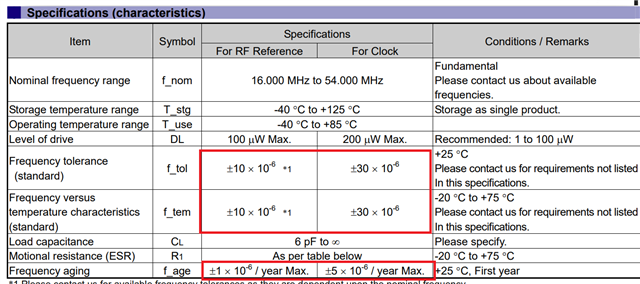Hi
I use Epson FA-128 (Q22FA12800025) based on Nordic’s recommendation, but I’m struggling to compare alternatives because the datasheet lists two aging rates:
±1 ppm/year for RF reference
±5 ppm/year for clock applications
Does Nordic assume the 1 ppm RF spec, or is aging expected to be higher? I am not sure how can the application effect the ppm like that.
I’m considering a ±3 ppm/year alternative—will this have a significant effect on meeting BLE accuracy requirements over the product’s lifetime?
Thanks!


